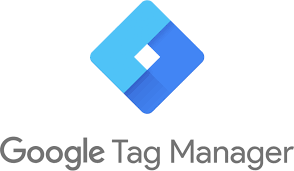Google Tag Manager
What does it mean
Google Tag Manager: Your reliable partner for efficient tag management. In today's digital world, where websites and applications are full of tracking codes and marketing tags, managing them manually can quickly become overwhelming. Fortunately, we have a tool that can significantly simplify the entire process – Google Tag Manager (GTM).
What is Google Tag Manager?
Think of GTM as a control center for all your marketing tags. It allows you to implement and manage various tracking codes (Google Analytics, remarketing pixels, etc.) in one place without the need to interfere with the source code of your website or application.

More info
Why use Google Tag Manager?
- Simple tag implementation: Forget about tedious code edits. GTM offers a user-friendly interface for adding and managing tags.
- Organization and clarity: All your tags are neatly organized in one place, which facilitates their management and monitoring.
- Flexibility and control: GTM allows setting rules for triggering tags based on specific events and conditions (e.g., page view, button click).
- Reduction of errors: Eliminates the need for constant source code edits, thereby reducing the risk of errors.
- Faster publishing of changes: Changes in tags can be implemented immediately without the need to edit the website's code.
- A/B testing: GTM allows easy setup of A/B tests for various marketing tags and tracking their performance.
Basic elements of GTM
- Tags (Tags): Code snippets of tracking tools or marketing platforms (e.g., Google Analytics, Facebook Pixel).
- Triggers (Triggers): Events or conditions that activate a specific tag (e.g., page view, button click).
- Variables (Variables): Dynamic values that can change within tags (e.g., page URL, product ID).
Who should use Google Tag Manager?
GTM is suitable for anyone who wants to streamline the management of marketing tags on their website or in their application. It is a useful tool for:
- Marketers: Simple management and implementation of tracking codes.
- Web developers: Reduction of the need for source code interventions.
- Website owners: Improved clarity and control over tags.
How to start with GTM?
- Creating an account: The first step is to create a Google Tag Manager account and link it to your website or application.
- Adding tags: Follow the instructions for implementing tracking codes from various platforms (Google Analytics, Facebook Pixel, etc.) within GTM.
- Setting up triggers: Define the conditions under which a specific tag should be activated.
- Publishing changes: After making changes, do not forget to publish them so that they are reflected on your website.
Conclusion
Google Tag Manager is a powerful tool that can significantly simplify the management of marketing tags and improve the overall overview of data from your website or application. If you haven't tried it yet, we recommend that you give GTM a chance and streamline your marketing efforts.
Latest news
Contact us
Don't miss out on the latest news from the world of UX, programming, analytics, and marketing.
Do you need advice?
What do you need help with?
Select all options that apply to you
Is there anything else you need help with?
Choose another topic











